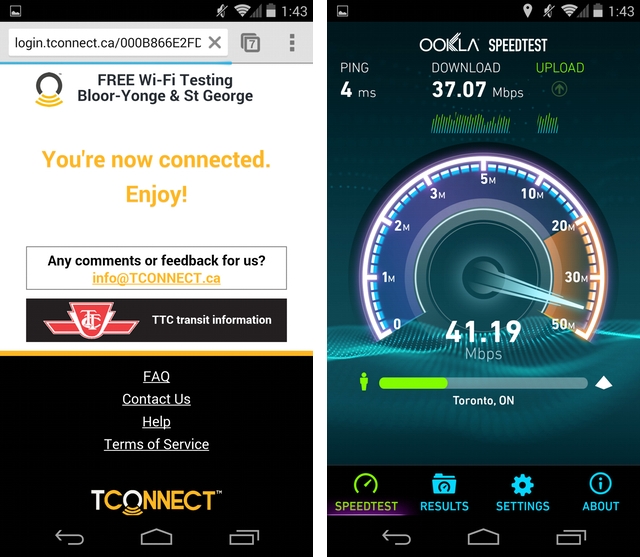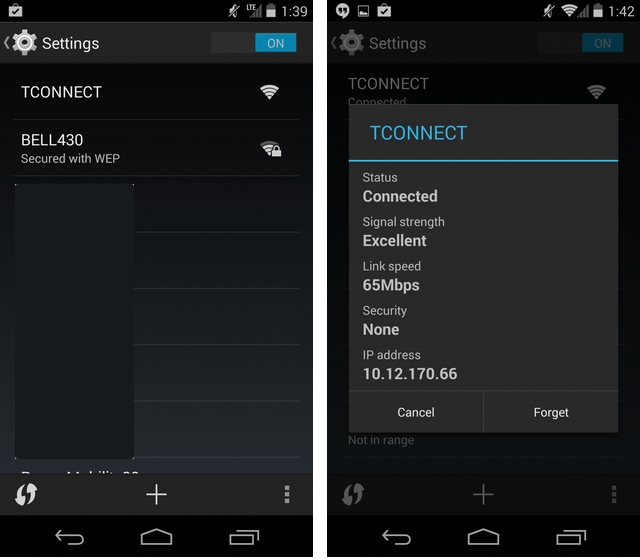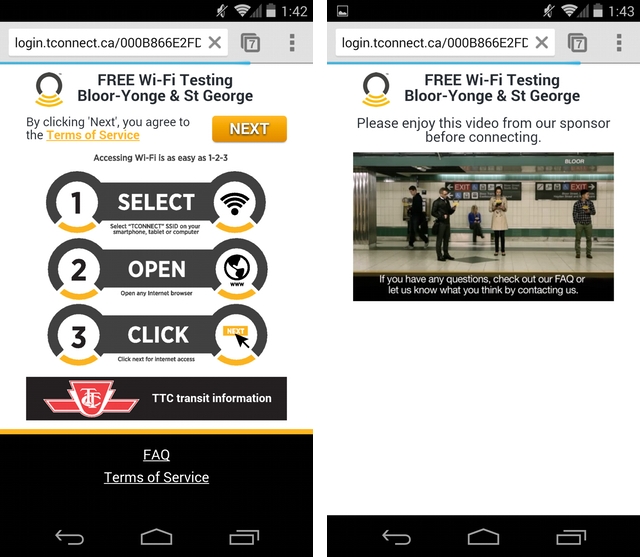
This week, the Toronto Transit Commission began a pilot project at two of its busiest subway stops, Bloor-Yonge and St. George, bringing free WiFi access to users waiting on the platforms.
While WiFi access is expected to come to all stations by 2017, access is limited to just that: the platform. Coordinating such connectivity while inside a moving car is decidedly more difficult, and continues to be a challenge for transit engineers around the world.
Earlier this year, New York City’s MTA launched cellular coverage for its four major carriers in 30 subway stations, providing seamless handoff from above ground to below.
Toronto is still on that path, and the company, BAI Canada Inc., a subsidiary of Broadcast Australia, contracted to deploy WiFi to the TTC, has been tasked with eventually bringing cellular service; the problem thus far, according to a report from earlier this year, has been cooperation from the carriers.

Now that we at least have internet access via WiFi at two stations, the writing is on the wall. Connecting to the TCONNECT network is relatively easy, as you’re prompted to do so when entering the station. Since there are no other open WiFi signals around, the TTC’s aptly-named network is the obvious choice.
It appears that the connection uses 802.11n, also known as Wireless-N, providing theoretical speeds of 300Mbps, but the 65Mbps link speed I achieved will be more likely the standard.

Before using the network, you must accept the terms and conditions, and are subject to watching a short clip from one of the TTC’s partner sponsors. Right now, no brands are signed up, but you can be sure those targeted takeover ad campaigns you see at Bloor-Yonge and St. George are going to extend in video format to these 15-30 second clips.
Once connected, though, you’re gold. The longest I’ve waited for a subway, other than during a hideous delay, is around 10 minutes, so you won’t have long to browse, tweet and download, but the connection is extremely fast.
I visited St. George at around 1:40pm on a Thursday afternoon and, though the platform was extremely busy, I achieved speeds of 37Mbps down and 41Mbps up. More impressive is the wired-like latency times of under 5ms, which should prevent any undue waiting for links to load.
More impressive is that the TTC’s WiFi pilot is mobile-optimized out of the gate; they are aware that the vast majority of connections will be done via smartphone while waiting for the next train.
And users can make calls over VoIP if the need is really dire: Skype, Viber, even Rogers One Number, should connect without delay for a quick phone call.
Welcome to the future!


